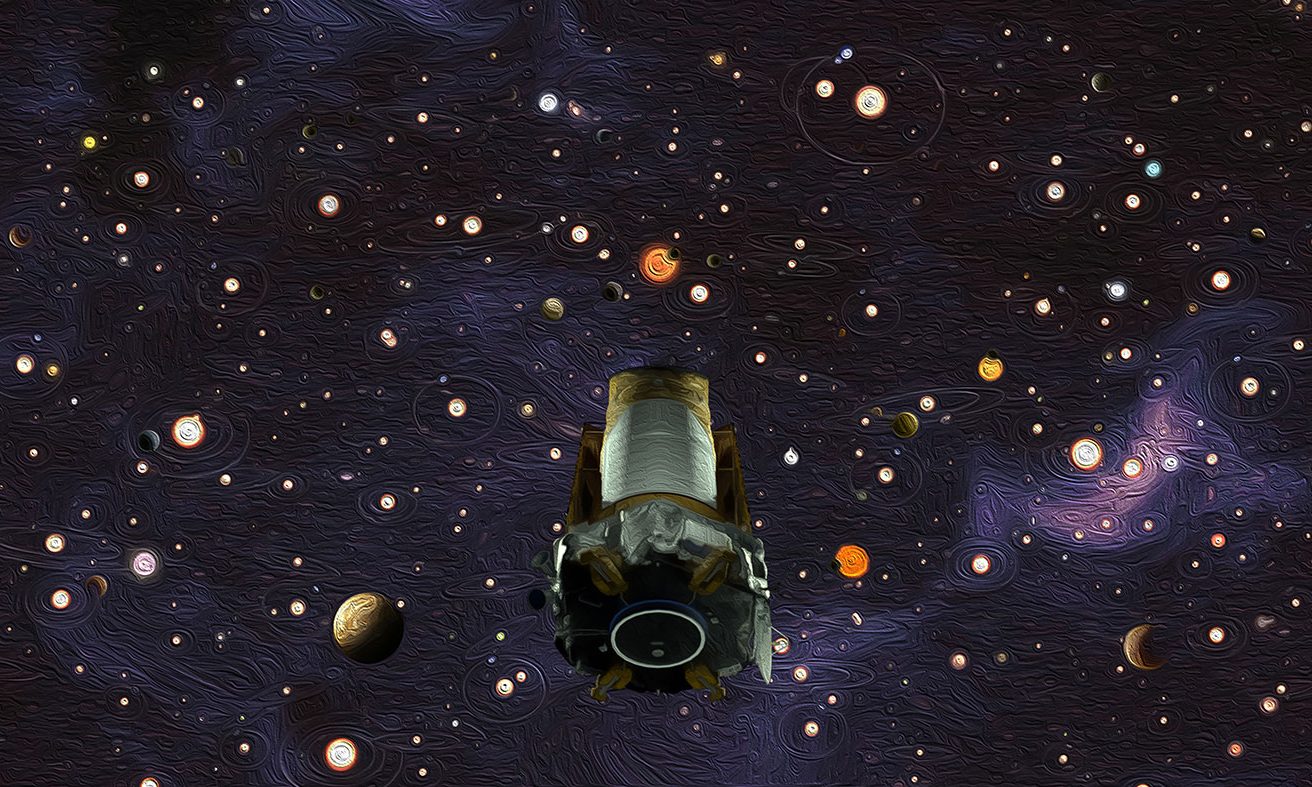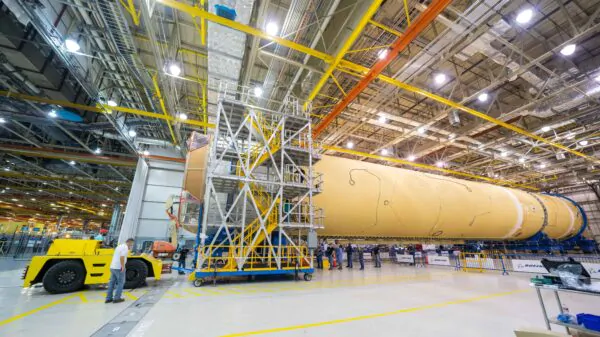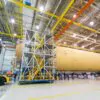Tuesday, October 30 NASA announced in a statement that after nine years in deep space discovering thousands of alien planets NASA’s Kepler Space Telescope has run out of fuel and will be retired from further science operations. Kepler’s nine-year mission collected data that indicates that our sky is filled with billions of hidden planets, more planets even than stars. NASA made the decision to retire the spacecraft within its current, safe orbit, away from Earth. Kepler has discovered more than 2,600 planets outside our solar system, many of which could be promising places for life.
Thomas Zurbuchen is the associate administrator of NASA’s Science Mission Directorate in Washington D.C.
“As NASA’s first planet-hunting mission, Kepler has wildly exceeded all our expectations and paved the way for our exploration and search for life in the solar system and beyond,” said Zurbuchen. “Not only did it show us how many planets could be out there, it sparked an entirely new and robust field of research that has taken the science community by storm. Its discoveries have shed a new light on our place in the universe, and illuminated the tantalizing mysteries and possibilities among the stars.”
The most recent analysis of the Kepler data concluded that 20 to 50 percent of the stars visible in the night sky are likely to have small, possibly rocky, planets similar in size to Earth, and located within the habitable zone of their parent stars. That means they’re located at distances from their parent stars where liquid water, essential to life as we know it, might pool on the planet surface.
Kepler found that the most common size of planet doesn’t even exist in our solar system. They are worlds between the size of Earth and Neptune. More research is needed about that class of planets. Kepler also found that there are some system more packed with planets than our own. In some cases, with so many planets orbiting close to their parent stars that our own inner solar system looks sparse by comparison.
William Borucki was the Kepler mission’s founding principal investigator. He is now retired from NASA’s Ames Research Center in California.
“When we started conceiving this mission 35 years ago we didn’t know of a single planet outside our solar system,” said Borucki. “Now that we know planets are everywhere, Kepler has set us on a new course that’s full of promise for future generations to explore our galaxy.”
Kepler was launched on March 6, 2009. The Kepler space telescope combined cutting-edge techniques in measuring stellar brightness with the largest digital camera outfitted for outer space observations at that time. Originally positioned to stare continuously at 150,000 stars in one star-studded patch of the sky in the constellation Cygnus, Kepler took the first survey of planets in our galaxy and became the agency’s first mission to detect Earth-size planets in the habitable zones of their stars.
Leslie Livesay is the director for astronomy and physics at NASA’s Jet Propulsion Laboratory. She served as Kepler project manager during mission development.
“The Kepler mission was based on a very innovative design,” Livesay said. “It was an extremely clever approach to doing this kind of science. There were definitely challenges, but Kepler had an extremely talented team of scientists and engineers who overcame them.”
The primary mission objectives were all accomplished during the first four years of the mission. Mechanical failures temporarily halted observations. The mission team, however, was able to devise a fix, switching the spacecraft’s field of view roughly every three months. This enabled an extended mission for the spacecraft, dubbed K2, which lasted as long as the first mission and bumped Kepler’s count of surveyed stars up to more than 500,000.
The observation of so many stars has allowed scientists to better understand stellar behaviors and properties, which is critical information in studying the planets that orbit them. New research into stars with Kepler data also is furthering other areas of astronomy, such as the history of our Milky Way galaxy and the beginning stages of exploding stars called supernovae that are used to study how fast the universe is expanding. The data from the extended mission were also made available to the public and science community immediately, allowing discoveries to be made at an incredible pace and setting a high bar for other missions. Scientists are expected to spend a decade or more in search of new discoveries in the treasure trove of data Kepler provided.
Jessie Dotson is Kepler’s project scientist at NASA’s Ames Research Center.
“We know the spacecraft’s retirement isn’t the end of Kepler’s discoveries,” said Dotson. “I’m excited about the diverse discoveries that are yet to come from our data and how future missions will build upon Kepler’s results.”
Before retiring the spacecraft, scientists pushed Kepler to its full potential, successfully completing multiple observation campaigns and downloading valuable science data even after initial warnings of low fuel.
In April NASA launched it’s newest planet hunter, the Transiting Exoplanet Survey Satellite (TESS). TESS builds on Kepler’s foundation with fresh batches of data in its search of planets orbiting some 200,000 of the brightest and nearest stars to the Earth, worlds that can later be explored for signs of life by missions, such as NASA’s James Webb Space Telescope.
NASA’s Ames Research Center in California’s Silicon Valley manages the Kepler and K2 missions for NASA’s Science Mission Directorate. NASA’s Jet Propulsion Laboratory in Pasadena, California, managed Kepler mission development. Ball Aerospace & Technologies Corporation in Boulder, Colorado, operates the flight system with support from the Laboratory for Atmospheric and Space Physics at the University of Colorado in Boulder.
According to NASA’s Exoplanet Science Institute, there are 3,826 known exoplanets in addition to the 8 accepted planets in our own solar system (the classification of Pluto as a dwarf planet remains controversial). Kepler leaves 2,426 project candidates that are yet to be confirmed.
Data from the Kepler mission indicates that 22 percent of earth like stars have small rocky planets in the “goldilocks zone” where they are so close to their stars that it is too hot to support life like Mercury or too far away from their star thus too cold like Pluto. From that it has been extrapolated that there are over two billion planets in our galaxy that could, in theory, support life.
There is a word of warning in that from our own system, which actually has three planets in the goldilocks zone. Earth has plenty of life. Mars is smaller than earth thus its molten core cooled off more rapidly than our own planet did causing it to lose most of its magnetic field which means that most of the water in the Martian atmosphere has been lost to space drying out the surface. Venus on the other hand is more geologically active than Earth. All of those volcanos constantly erupting has filled its atmosphere with so much volcanic material that the planet has heated up far beyond the point that liquid water can remain on the surface. Both might have had life in the distant past, but little (if any) of that life has survived to the present. There may be over two billion goldilocks zone planets in the galaxy; but how many of them are at a point in their planetary life cycles where they do actually support life. What we do know is that there is no shortage of goldilocks zone planets. We also know, from our exploration of our own system is that water exists in massive quantities. Most of the water in this system is on moons around Jupiter and Saturn or out in icy Kuiper belt objects and comets likely extending out into the Oort cloud. Only a small fraction of the water in the system is in Earth’s oceans, lakes, and rivers.
Original reporting by Physics.org contributed to this report.






















































